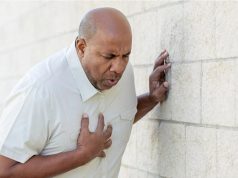Greatest reduction would involve performing unenhanced CT assuming no more than moderate negative effect on diagnostic accuracy
MONDAY, June 13, 2022 (HealthDay News) — Intravenous contrast use for computed tomography (CT) scans could be reduced by about 80 percent using a combination of dose reduction strategies, according to a research letter published online June 9 in the Journal of the American Medical Association.
Noting that there is a global shortage of iodinated contrast media due to a COVID-19-induced supply chain disruption in China, Matthew S. Davenport, M.D., from Michigan Medicine in Ann Arbor, and colleagues considered five alternative strategies for conserving contrast during CT imaging: weight-based dosing (model A), reducing contrast dose while reducing tube voltage (model B), replacing contrast CT with unenhanced CT if no more than a moderate negative effect on diagnostic accuracy is predicted (model C), a combination of models A and C (model D), and a combination of models A, B, and C (model E). These rules were applied to observed contrast use in each examination in a sample of 1.04 million CT examinations performed Jan. 1, 2015, to March 11, 2021; the results were scaled to a hypothetical population of 1 million CT scans in adults.
The researchers found that 47.1 million mL of contrast was estimated to be used for the 1 million CT scans in the base case. A 12 percent reduction in use was estimated with weight-based dosing, while reducing tube voltage and contrast dose would yield a 25 percent reduction. The greatest reduction would involve performing unenhanced CT (model C; 78 percent reduction). Combining all three approaches (model E) would achieve an estimated 83 percent reduction.
“Adoption of some of the dose-reduction strategies beyond the current shortage could mitigate supply chain risk and remove waste,” the authors write.
Several authors disclosed financial ties to the medical device and other industries.
Copyright © 2022 HealthDay. All rights reserved.








